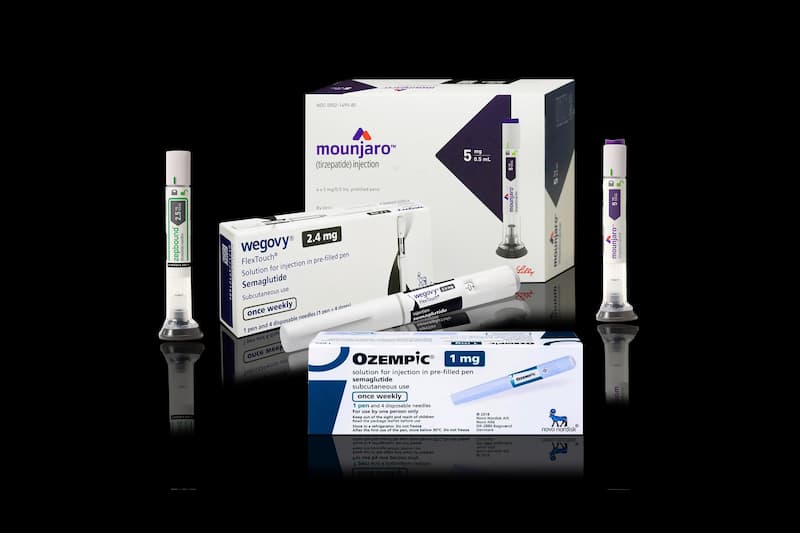Can You Do Intermittent Fasting While on GLP-1?

If you’re currently taking a GLP-1 medication like Ozempic, Wegovy, or Mounjaro, you may be wondering whether you can safely or smartly pair it with intermittent fasting. Both strategies promote weight loss and metabolic improvement. Can these two superheroes team up without stepping on each other’s capes?
Before taking action, let’s understand how these two approaches interact and what to expect when you mix fasting with your online prescription weight loss medication.
What Happens in Your Body with GLP-1?
When you take a GLP-1 medication, your body slows digestion, tames your appetite, and improves insulin response. That combination makes feeling full with less food easier and keeps your blood sugar levels on an even keel. These medications mimic a natural hormone your body releases after eating, nudging you to eat less and helping the pounds slip away over time.
Because GLP-1s delay gastric emptying and blunt hunger cues, you’re less likely to snack between meals or overeat. For many people, this leads to a natural calorie cutback without having to wage a daily war on willpower. That’s why weight loss medications like Mounjaro are often compared to a built-in appetite management system.
How Intermittent Fasting Works
Intermittent fasting (IF) is all about timing your meals like a well-choreographed dance rather than stressing over every calorie on your plate. Common approaches include:
- The 16:8 approach, in which all snacks and meals occur during an 8-hour window, followed by 16 hours of fasting
- Alternate-day fasting, a plan which alternates normal eating for a day, followed by little to no food consumption the next day
- 5:2 fasting, which allows a normal eating pattern five days a week with little to no eating on two non-consecutive days
The primary benefit of IF is boosting your body’s metabolic flexibility. It’s like teaching your metabolism to switch gears like a pro driver. By extending the time your body spends in a fasting state, you teach it to burn stored fat more efficiently, regulate blood sugar, and keep inflammation in check. Many people also report better focus, more energy, and improved digestion while fasting.
Why Combining GLP-1 and Intermittent Fasting Can Make Sense
If you’re already on a GLP-1 medication and are not very hungry in the morning, easing into intermittent fasting may feel as natural as pouring that first cup of coffee. In fact, many people unintentionally begin fasting once they start GLP-1 therapy, as breakfast cravings and late-night snacking quietly fade away.
You might find that skipping breakfast becomes effortless, making a 16:8 fasting protocol easy to adopt. Your GLP-1 medication helps keep hunger at bay, while fasting further enhances insulin sensitivity and promotes fat loss. For some, this combination feels like a power duo working together to accelerate results and make long-term habits easier to sustain.
When to Be Cautious About Fasting on GLP-1s
Even though fasting and GLP-1s can work well together, proceed with awareness. GLP-1 medications already slow gastric emptying and reduce calorie intake. Adding fasting can compound those effects, sometimes leading to fatigue, dizziness, or even nausea if your blood sugar drops too low.
If you’re on a high dose or just recently bought a GLP-1 medication online, resist the urge to dive headfirst into an aggressive fasting schedule right away. Your body needs time to adjust to the changes brought on by GLP-1 therapy. Starting too fast with fasting could backfire, making you feel worse and less likely to stick with either approach.
Instead, start slowly. For example, if you naturally stop feeling hungry in the morning, try delaying breakfast by an hour or two each day until you comfortably reach a 14- or 16-hour fast. This allows your body to adapt without turning your stomach upside down.
Tips for Success if You Combine GLP-1 with Intermittent Fasting
Listen to Your Body and Avoid Extremes
GLP-1 medications reduce hunger, but that doesn’t mean you should ignore your nutrition needs. You need to adjust if you’re feeling weak, dizzy, or nauseous during your fasting window.
When You Eat, Make it Count
Focus on nutrient-dense meals that include lean proteins, healthy fats, fiber-rich vegetables, and slow-digesting carbs. Because you’re likely eating fewer meals, each one needs to deliver the fuel your body needs to stay energized and recover.
Hydration Is Critical
GLP-1 medications can lead to dehydration, and fasting can amplify it if you’re not intentional about drinking water. Aim to sip water consistently throughout the day, even during fasting windows. Add electrolytes if you feel off. They’re like the midday charge-up your body needs.
Keep Your Healthcare Provider in the Loop
Not all GLP-1 users are ideal candidates for intermittent fasting, especially if you’re managing blood sugar levels, have a history of eating disorders, or take medications that require food for absorption. Your provider can help you tailor a fasting plan that works with your medication schedule and your unique health profile.
What Results Can You Expect?
Combining GLP-1 medication with intermittent fasting can deliver a triple play of benefits:
- Enhanced Weight Loss: Your body may shed pounds more efficiently than with either strategy alone.
- Improved Energy: Many users notice steadier energy levels throughout the day.
- More Stable Blood Sugar Levels: Fewer spikes and crashes can make daily life smoother.
That said, results vary depending on consistency, individual metabolism, and other lifestyle factors like sleep, stress, and physical activity. What matters most is how sustainable the approach feels for you. If fasting makes your day easier, it’s a stronger ally to your GLP-1 treatment plan.
However, if you feel anxious or deprived or notice your energy crashing during fasts, it may be a sign that you need to adjust your strategy. Fasting is not a magic bullet; it’s a tool. When used wisely alongside GLP-1 medications, it can help you build momentum and stay on track.
The Bottom Line
Yes, you can intermittently fast while on a GLP-1 medication, but the key is to approach it with awareness, not abandon. The appetite suppression you get from your GLP-1 can make fasting feel easier, but you still need to maintain proper nutrition, hydration, and self-awareness in front and center.
If you’re considering pairing the two, ease into a fasting schedule like dipping your toe into a pool and monitor how your body reacts. Don’t hesitate to adjust based on how you feel. Above all, communicate with your healthcare provider to ensure you use both tools safely and effectively.
With the right balance, you can amplify your results, build stronger habits, and take the wheel of your health journey without constantly fighting your appetite.


